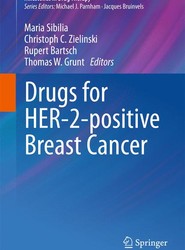(To see other currencies, click on price)
MORE ABOUT THIS BOOK
Main description:
There are only very few chemical classes of antibiotics in medical use, and these have originated over a span of more than 60 years of research. Almost half a century ago, the first member of the macrolides, erythromycin, was introduced as a treatment option for bacterial infections. Erythromycin is a very complex fermentation product obtained from the soil bacterium Saccharopolyspora ery thraea (originally named Streptomyces erythreus). The success of erythromycin, based on its efficacy and tolerability, stimulated researchers throughout the world to undertake intense efforts to understand the biology and chemistry of macrolides and to use this experience to improve the properties of this compound class. The second generation of macrolides, based on chemical modifications of erythromy cin, is currently being in broad use, especially for treatment of respiratory tract infections. We presently foresee the introduction of a new generation of macro lides, i. e. the ketolides, which have the potential to overcome rising resistance problems. This monograph is intended to give the interested reader an overview on "macrolide experience", covering important areas from basic research to clinical use. Starting from a historic overview, the essential basic parameters - efficacy, pharmacokinetics, pharmacodynamics, and pharmacology - are highlighted in order to introduce the reader to the rationale for clinical use of macrolides. The following group of chapters cover the complex chemistry of the macro lactone structures, giving historic background, basic structure-activity relation ships of various derivatization strategies, and perspectives for future discovery of new semisynthetic macrolide antibiotics.
Contents:
to the macrolide antibiotics.- Macrolides: a clinical overview.- Pharmacokinetics/pharmacodynamics of macrolides.- Cellular accumulation of macrolide antibiotics. Intracellular bioactivity.- Clarithromycin and new derivatives of erythromycin.- Azithromycin and novel azalides.- Ketolides: novel antibacterial agents designed to overcome resistance to erythromycin A within gram-positive cocci.- Novel macrolide derivatives active against resistant pathogens.- Polyketide diversity.- Biosynthesis of the macrolide antibiotic, tylosin.- Activity of macrolides against mycobacteria.- Chlamydia pneumoniae and asthma and atherosclerosis: role of macrolides...- Activity of macrolides in sexually transmitted diseases.- Helicobacter pylori and macrolides.- Effects of macrolide antibiotics on ribosome function.- Mechanisms of resistance to macrolides, lincosamides, and ketolides.
PRODUCT DETAILS
Publisher: Springer (Birkhauser Verlag AG)
Publication date: October, 2012
Pages: 323
Weight: 516g
Availability: Available
Subcategories: Immunology, Infectious Diseases, Microbiology, Pharmacology
From the same series













































